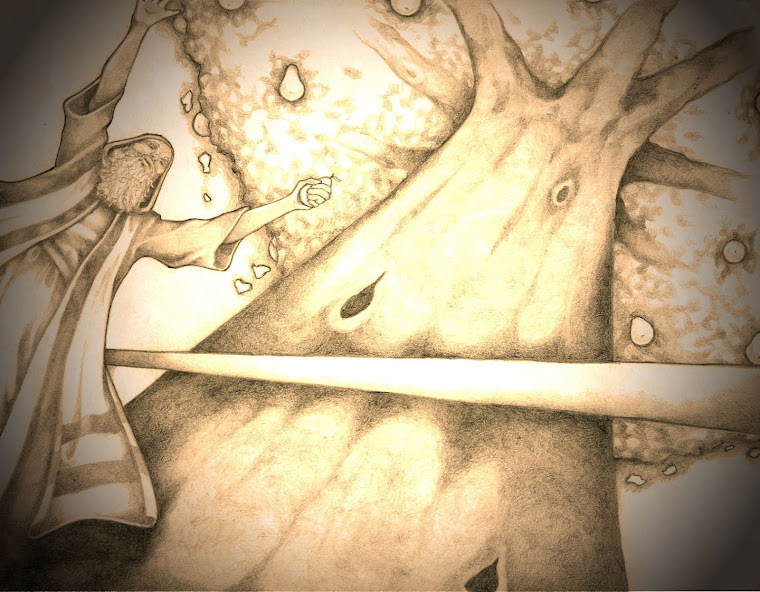 |
| Stela 3 |
I consider myself a student of the standard works (Bible, Book of Mormon, Doctrine & Covenants, and the Pearl of Great Price) but with greater emphasis on the Book of Mormon and as such I admit that I am late to John L. Sorenson’s “An Ancient American Setting for the Book of Mormon”. Although through my previous reading and research I consider myself to be very familiar with Book of Mormon evidences and geography theories but I still decided to get a copy of the book and give it a “good reading”. Even though I have not finished it I am enjoying it and have stumbled across many evidences that this book seems to give additional information on. One of the evidences claimed by Sorenson was the infamous Stela 3 of La Venta. This Stela is thought to date about 600 B.C. or later, basically during the end of the Olmec/Jaredite timeframe and the beginning of the Maya/Nephite timeframe. The issue surrounding the Stela is that it seems to show to two people meeting and one of them being a prominent bearded man which would be a rarity for the indigenous culture of Mesoamerican regions. The bearded figure is commonly referred to as the “Uncle Sam” figure.
In 1946, the famous "Uncle Sam" figure on Stela 3 at La Venta, was described by Mexican archaeologist Miguel Covarrubias as a "fully bearded man with an enormous aquiline nose. . ., a personage with surprisingly pronounced Semitic features" (Covarrubias 1946: 90). Two decades later, art historian Tatiana Proskouriakoff of the Carnegie Institution of Washington referred to the same bearded figure on Stela 3 as a "visitor" and with related low relief carvings as representing a racially distinct group of "strangers." These foreigners ultimately gained ascendancy over another stocky racial type on carvings. These La Venta carvings are also described as "credibly realistic portraits and descriptions of historic scenes," from a highly developed religious society. (Proskouriakoff 1968: 121-122)
 |
| "Uncle Sam" Bearded Figure (Stela 3) |
“A particularly interesting case of such external evidence involves a scene on a monument located at an archaeological site that I consider to be the prime candidate for the city of Mulek. As explained elsewhere, the site of La Venta in southern Mexico qualifies remarkably well as the city of Mulek. It was one of the great centers of Olmec civilization, whose distribution and dates remind us of Jaredite society. Stela 3 at La Venta is a basalt slab fourteen feet high and weighing fifty tons. It is thought to date to about 600 B.C., or a little later, at or just after the late Olmec (Jaredite?) inhabitants abandoned the site.
 Carved on the stone is a scene in which a person of obvious high social status, whose facial features look like those shown in some earlier Olmec art, confronts a prominent man who appears to a number of (non-Mormon) art historians like a Jew. This scene has been interpreted by archaeologists as a formal encounter between leaders of different ethnic groups. For instance, the late expert on Mesoamerican art, Tatiana Proskouriakoff, considered that Stela 3 shows "two racially distinct groups of people" and that "the group of the [Jewish-looking] bearded stranger ultimately gained ascendency." She concluded, thus, that "the culture of La Venta [thereafter] contained a strong foreign component." Latter-day Saints may wonder whether Mulek or some other person in his party might even be represented on Stela 3, considering the date and the location at a site very suitable to have been the "city of Mulek." At the least we see that ethnic and cultural variety existed in Mesoamerica where and when we would expect evidence of Mulek's group to show up.”
Carved on the stone is a scene in which a person of obvious high social status, whose facial features look like those shown in some earlier Olmec art, confronts a prominent man who appears to a number of (non-Mormon) art historians like a Jew. This scene has been interpreted by archaeologists as a formal encounter between leaders of different ethnic groups. For instance, the late expert on Mesoamerican art, Tatiana Proskouriakoff, considered that Stela 3 shows "two racially distinct groups of people" and that "the group of the [Jewish-looking] bearded stranger ultimately gained ascendency." She concluded, thus, that "the culture of La Venta [thereafter] contained a strong foreign component." Latter-day Saints may wonder whether Mulek or some other person in his party might even be represented on Stela 3, considering the date and the location at a site very suitable to have been the "city of Mulek." At the least we see that ethnic and cultural variety existed in Mesoamerica where and when we would expect evidence of Mulek's group to show up.” 



